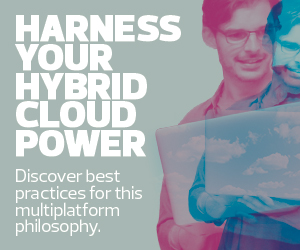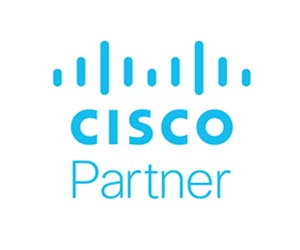At Cisco Live in June, Liz Centoni, chief strategy officer and general manager of applications at Cisco, proclaimed hybrid cloud and multicloud the de facto approach for enterprises operating today. But just what do IT leaders mean when they refer to hybrid cloud, and why are they singing its praises?
Many leading IT companies define hybrid cloud in a similar way. IBM explains, “Hybrid cloud integrates public cloud services, private cloud services and on-premises infrastructure, and provides orchestration, management and application portability across all three,” adding that “hybrid multicloud is hybrid cloud that includes public cloud services from more than one cloud service provider.”
Describing the advantages of this type of architecture, the company notes, “Hybrid cloud and hybrid multicloud help organizations achieve their technical and business objectives more effectively and cost-efficiently than public cloud or private cloud alone. In fact, according to one recent study, companies derive up to 2.5x the value from hybrid cloud than from a single-cloud, single-vendor approach.”
NetApp offers a similar definition: “Hybrid cloud refers to a mixed computing, storage, and services environment made up of on-premises infrastructure, private cloud services, and a public cloud — such as Amazon Web Services (AWS) or Microsoft Azure — with orchestration among the various platforms. Using a combination of public clouds, on-premises computing, and private clouds in your data center means that you have a hybrid cloud infrastructure.”
Adopting Hybrid Cloud as a Wholesale Philosophy
While it recognizes a similar understanding of a hybrid cloud environment, CDW extends its view of the concept, describing it as a foundational philosophy. As Chris Gibes, manager of the hybrid infrastructure technology practice at CDW, explained, “Running a hybrid cloud effectively requires adoption of patterns and practices that are consistent across whatever platform best suits the application and workload, whether that be on-premises, in a public cloud or across multiple clouds. In practice, this means aligning operations, organizations and processes to common frameworks and principles.”
Click the banner to learn how your institution can benefit from a hybrid cloud environment.
Gibes said CDW’s Unified Cloud concept “starts by changing the way your IT organization operates in addition to automating your on- and off-prem workloads.” It’s part of a digital transformation effort that leverages platform engineering to transform previously manual tasks into automated tasks and traditional infrastructure into immutable infrastructure.
“CDW Unified Cloud and platform engineering are completely new concepts and a new philosophy of automation and service delivery that is vendor agnostic. Your on-prem data center is now unified with a public cloud provider versus two separate and distinct environments,” Gibes explained. “Service delivery is now placed either on-premises or in a public cloud based on business requirements. You’ve increased your flexibility, and your technical service delivery model is based on business and financial drivers versus technology.”
DIVE DEEPER: Discover the basic steps to optimize your organization’s hybrid cloud environment.
How Automation Can Amplify the Benefits of Hybrid Cloud
Andrew Fanning, enterprise architect at CDW, said organizations must leverage automation “to bring some of the promises of the cloud back into an on-premises — and therefore hybrid — world.”
In a hybrid cloud environment, Fanning said, automation can act as the translator. “So, if I need to deploy on-prem versus the cloud, I can hide some of that in code behind automation, and automation can lead to a more seamless way for the end user to request services, regardless of the location.”
Fanning and Neil Graver, executive technology strategist at CDW, cited two automation tools that are currently dominating the automation market — Ansible and TerraForm — saying both offer tremendous mutability and flexibility.
Fanning explained that the first step of any automation journey is to automate from “on-prem all the way through data ops, taking advantage of your data. I think we’ve come a long way in that first step, adding a number of resources such as Infrastructure as Code and really automating what's on-premises to start that foundational journey of flexibility. And we should kind of lean into that a little bit.”
Brought to you by:














